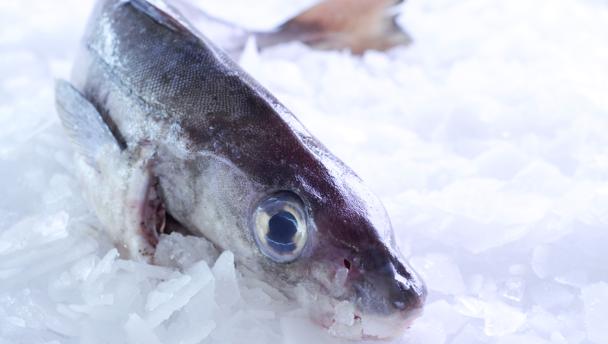

A white sea-fish found in the North Atlantic that is a member of the cod family. It is subject to the same problems of over-fishing as cod, so choose haddock from a certified sustainable fishery (look for the MSC logo). Second only to cod in popularity, haddock is a much smaller fish than cod with a sweeter flavour. Haddock has iron-grey skin and a silvery belly with a distinctive black line running the length of the fillet. There is also a black spot at the top end of the fillet. The fish has flaky flesh, and is available fresh or frozen, whole or as steaks and fillets. It has similar uses to cod and in many recipes can also be substituted by more sustainable white fish such as pollack, coley or pouting (bib). An Arbroath smokie is a whole wood-smoked haddock.
 Fantastic fish fingers
Fantastic fish fingers
 Spiced haddock chowder
Spiced haddock chowder
Haddock is available fresh or frozen, usually as a fillet, but very occasionally as a whole, headless fish. In the spring, haddock roe are also available; they can be poached or fried.
Haddock is also one of the most popular smoked fish: it’s sold dyed and un-dyed as Finnan haddie (cold-smoked fish on the bone), and is turned into Arbroath smokies (a hot-smoked artisanal product from Arbroath in Scotland). Unlike other smoked fish, smoked haddock is not skinned before it’s smoked.
Haddock can be cooked just like cod – poached, baked, fried or grilled, and served with or without sauce. Tartare sauce is a classic accompaniment, and haddock is delicious deep-fried for homemade fish and chips. It’s also good in fish pie, fish cakes, soup or kedgeree, and is a traditional ingredient in the creamy soup, Cullen skink. Fillets can be skinned, but need pin-boning before or after cooking.
Article by CJ Jackson
Type the ingredients you want to use, then click Go. For better results you can use quotation marks around phrases (e.g. "chicken breast"). Alternatively you can search by chef, programme, cuisine, diet, or dish (e.g. Lasagne).